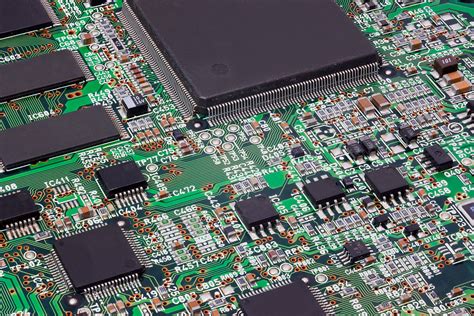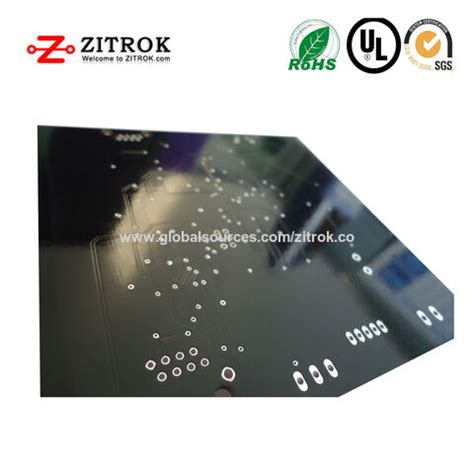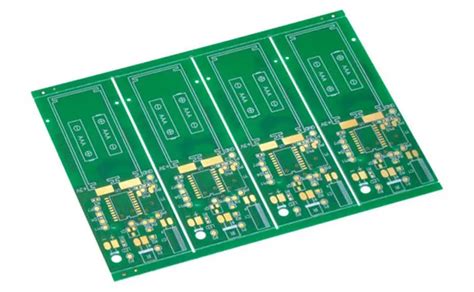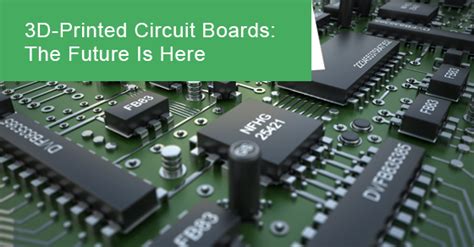Smt machine for pcb assembly
Benefits Of Using SMT Machine for PCB Assembly
Surface Mount Technology (SMT) machines have revolutionized the field of Printed Circuit Board (PCB) assembly, offering numerous benefits that enhance both the efficiency and quality of electronic manufacturing processes.
One of the primary advantages of using SMT machines is their ability to handle high-density component placement.
Unlike traditional through-hole technology, SMT allows for the placement of components on both sides of the PCB, significantly increasing the circuit’s complexity and functionality without expanding its physical footprint. This capability is particularly beneficial in the production of compact and sophisticated electronic devices, such as smartphones and medical equipment.
Moreover, SMT machines contribute to improved manufacturing speed and throughput.
The automation of component placement and soldering processes reduces the time required for assembly, enabling manufacturers to meet tight production schedules and respond swiftly to market demands. This increased efficiency is further bolstered by the precision and accuracy of SMT machines, which minimize the risk of human error and ensure consistent quality across large production runs. Consequently, manufacturers can achieve higher yields and lower defect rates, translating to cost savings and enhanced product reliability.
In addition to speed and precision, SMT machines offer flexibility in component selection and placement.
They are capable of handling a wide range of component sizes and types, from tiny resistors and capacitors to complex integrated circuits. This versatility allows designers to optimize their PCB layouts for performance and space utilization, leading to more innovative and efficient electronic products. Furthermore, the programmability of SMT machines enables quick reconfiguration for different production runs, making them ideal for both high-volume manufacturing and small-batch prototyping.
Another significant benefit of using SMT machines in PCB assembly is the reduction in labor costs.
The automation of assembly processes reduces the need for manual intervention, allowing manufacturers to allocate their workforce to more value-added tasks such as quality control and product development. This shift not only lowers operational costs but also enhances overall productivity and competitiveness in the market. Additionally, the reduced reliance on manual labor mitigates the impact of labor shortages and fluctuations, providing a more stable and predictable production environment.
Environmental considerations also play a role in the advantages of SMT machines.
The precision and efficiency of SMT processes result in less material waste, as components are placed accurately and solder paste is applied with minimal excess. This reduction in waste contributes to more sustainable manufacturing practices and aligns with the growing emphasis on environmental responsibility in the electronics industry. Furthermore, the compact nature of SMT-assembled PCBs often leads to lower power consumption in the final products, supporting energy efficiency and reducing the environmental footprint of electronic devices.

In conclusion, the adoption of SMT machines in PCB assembly offers a multitude of benefits that enhance manufacturing efficiency, product quality, and environmental sustainability. The ability to handle high-density component placement, coupled with increased speed, precision, and flexibility, positions SMT as a critical technology in the advancement of modern electronics. By reducing labor costs and material waste, SMT machines not only improve the economic viability of electronic manufacturing but also contribute to more responsible and sustainable production practices. As the demand for sophisticated and compact electronic devices continues to grow, the role of SMT machines in PCB assembly will undoubtedly become even more pivotal.
How To Choose The Right SMT Machine For Your PCB Assembly Line
Selecting the appropriate Surface Mount Technology (SMT) machine for your Printed Circuit Board (PCB) assembly line is a critical decision that can significantly impact the efficiency, quality, and cost-effectiveness of your manufacturing process. The choice of an SMT machine involves a thorough understanding of your production requirements, the technical specifications of the machines available, and the long-term implications of your investment.
To begin with, it is essential to assess the volume and complexity of your production.
High-volume production lines necessitate machines with high-speed capabilities and robust throughput. Conversely, for low to medium-volume production, flexibility and ease of changeover might be more critical. Understanding your production needs will help you determine whether you require a high-speed chip shooter, a flexible placer, or a combination of both.
Another crucial factor to consider is the precision and accuracy of the SMT machine.
The placement accuracy is paramount, especially for boards with fine-pitch components or high-density interconnects. Machines with advanced vision systems and precise placement mechanisms can ensure that components are placed accurately, reducing the likelihood of defects and rework. Additionally, the machine’s ability to handle a wide range of component sizes and types is vital for maintaining versatility in your production line.
Furthermore, the software and user interface of the SMT machine play a significant role in its overall functionality.
User-friendly software can streamline the programming and setup process, reducing downtime and increasing productivity. Advanced software features, such as offline programming and optimization algorithms, can further enhance the efficiency of your assembly line. It is also beneficial to consider machines that offer remote monitoring and diagnostics, allowing for real-time performance tracking and quick troubleshooting.
The reliability and maintenance requirements of the SMT machine are also important considerations.
Machines with a proven track record of reliability can minimize unexpected downtime and maintenance costs. It is advisable to research the machine’s mean time between failures (MTBF) and mean time to repair (MTTR) metrics. Additionally, the availability of spare parts and the quality of technical support from the manufacturer can significantly influence the machine’s long-term performance.
Cost is inevitably a significant factor in the decision-making process.
While it may be tempting to opt for the least expensive option, it is crucial to consider the total cost of ownership. This includes not only the initial purchase price but also the costs associated with maintenance, spare parts, and potential downtime. Investing in a high-quality, reliable machine may result in lower long-term costs and higher overall productivity.
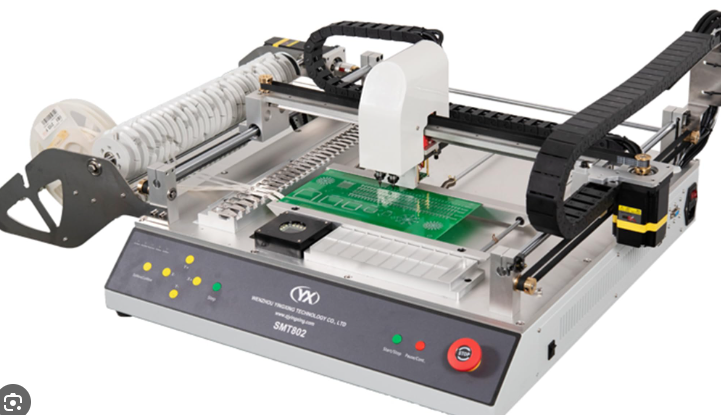
Moreover, the scalability and future-proofing of the SMT machine should not be overlooked.
As technology evolves and production demands change, having a machine that can adapt to new requirements can provide a competitive edge. Machines that offer modular upgrades or can be easily integrated with other equipment in your assembly line can ensure that your investment remains viable for years to come.
In conclusion, choosing the right SMT machine for your PCB assembly line requires a comprehensive evaluation of your production needs, technical specifications, software capabilities, reliability, cost, and scalability. By carefully considering these factors, you can make an informed decision that will enhance the efficiency, quality, and profitability of your manufacturing process.
Common Challenges In SMT Machine PCB Assembly And How To Overcome Them
Surface Mount Technology (SMT) machines have revolutionized the process of Printed Circuit Board (PCB) assembly, offering increased efficiency, precision, and scalability. However, despite their advanced capabilities, SMT machines are not without their challenges. Understanding these common issues and implementing effective solutions is crucial for optimizing the assembly process and ensuring high-quality outcomes.
One of the primary challenges in SMT machine PCB assembly is component misalignment.
This issue often arises due to inaccuracies in the placement of components on the PCB, which can lead to electrical failures and reduced product reliability. To mitigate this problem, it is essential to regularly calibrate the SMT machine and ensure that the pick-and-place heads are functioning correctly. Additionally, using high-quality stencils and ensuring proper solder paste application can significantly reduce the risk of misalignment.
Another prevalent challenge is solder paste defects, which can manifest as insufficient solder, excessive solder, or solder bridging.
These defects can compromise the electrical connections and overall functionality of the PCB. To address this issue, it is crucial to maintain a controlled environment with optimal temperature and humidity levels during the solder paste application process. Furthermore, regular inspection and maintenance of the solder paste printer can help in achieving consistent and accurate paste deposition.
Component tombstoning, where one end of a component lifts off the PCB during reflow soldering, is another common problem.
This phenomenon is typically caused by uneven heating or an imbalance in the solder paste volume at the component’s ends. To overcome tombstoning, it is advisable to use a reflow oven with a well-defined thermal profile that ensures uniform heating. Additionally, adjusting the solder paste volume and placement can help in preventing this issue.
Solder balling, characterized by the formation of small solder balls around the solder joints, poses another significant challenge.
This defect can lead to short circuits and reliability issues. To minimize solder balling, it is important to use a solder paste with appropriate flux content and particle size. Moreover, optimizing the reflow profile to ensure gradual heating and cooling can help in reducing the occurrence of solder balls.
Another critical challenge in SMT machine PCB assembly is the occurrence of voids in solder joints.
Voids can weaken the mechanical strength of the joints and affect thermal and electrical conductivity. To address this issue, it is essential to use a solder paste with low voiding characteristics and ensure proper stencil design. Additionally, implementing a vacuum reflow process can help in reducing void formation by removing trapped gases during soldering.
Component placement accuracy is also a significant concern, especially for high-density PCBs with fine-pitch components.
Inaccurate placement can lead to open circuits, short circuits, and overall assembly failures. To enhance placement accuracy, it is important to use advanced vision systems and alignment algorithms in the SMT machine. Regularly updating the machine’s software and firmware can also contribute to improved placement precision.
Finally, managing the thermal stress during the reflow soldering process is crucial to prevent component damage and ensure reliable solder joints.
Excessive thermal stress can lead to component cracking, warping, and delamination. To mitigate thermal stress, it is important to use a reflow oven with a controlled thermal profile that gradually ramps up and cools down the temperature. Additionally, selecting components with compatible thermal characteristics can help in minimizing the risk of thermal damage.
In conclusion, while SMT machines offer numerous advantages for PCB assembly, they also present several challenges that need to be addressed to ensure optimal performance and reliability. By implementing regular maintenance, using high-quality materials, and optimizing process parameters, it is possible to overcome these challenges and achieve successful SMT machine PCB assembly.

Innovations In SMT Machine Technology For PCB Assembly
Surface Mount Technology (SMT) machines have revolutionized the field of Printed Circuit Board (PCB) assembly, offering unprecedented precision, efficiency, and reliability. As the demand for smaller, more complex electronic devices continues to grow, innovations in SMT machine technology have become crucial in meeting these evolving requirements. These advancements not only enhance the capabilities of PCB assembly but also contribute to the overall improvement of electronic manufacturing processes.
One of the most significant innovations in SMT machine technology is the development of high-speed placement machines. .
These machines are designed to place thousands of components per hour with remarkable accuracy, significantly reducing the time required for PCB assembly. The integration of advanced vision systems and sophisticated algorithms allows these machines to identify and place components with micron-level precision, ensuring that even the smallest and most delicate components are accurately positioned. This level of precision is essential for the production of high-density PCBs used in modern electronic devices.
In addition to speed and accuracy, flexibility is another critical aspect of modern SMT machines.
The ability to handle a wide variety of components, from tiny 01005 resistors to large connectors, is essential for manufacturers who need to produce diverse product lines. Innovations in feeder technology have played a significant role in enhancing the flexibility of SMT machines. Intelligent feeders that can automatically adjust to different component sizes and types have streamlined the setup process, reducing downtime and increasing overall productivity.
Moreover, the integration of artificial intelligence (AI) and machine learning (ML) into SMT machines has opened new avenues for optimization and quality control.
AI-driven algorithms can analyze vast amounts of data collected during the assembly process to identify patterns and anomalies that may indicate potential defects. This predictive capability allows manufacturers to address issues before they result in faulty products, thereby improving yield rates and reducing waste. Additionally, machine learning models can continuously learn and adapt to new conditions, further enhancing the performance and reliability of SMT machines over time.
Another noteworthy innovation is the development of 3D solder paste inspection (SPI) and automated optical inspection (AOI) systems.
These systems provide real-time feedback on the quality of solder joints and component placement, enabling immediate corrective actions. The use of 3D imaging technology allows for a more comprehensive analysis of solder paste deposits, ensuring that they meet the required specifications. This level of inspection is particularly important for fine-pitch components, where even minor deviations can lead to significant issues.
Furthermore, advancements in software and connectivity have transformed SMT machines into integral components of the smart factory ecosystem.
Modern SMT machines are equipped with sophisticated software that enables seamless integration with other manufacturing systems, facilitating real-time data exchange and process optimization. The implementation of Industry 4.0 principles, such as the Internet of Things (IoT) and cyber-physical systems, has enabled manufacturers to achieve higher levels of automation and efficiency. This interconnected environment allows for better resource management, predictive maintenance, and overall operational excellence.
In conclusion, the continuous innovations in SMT machine technology have significantly enhanced the capabilities of PCB assembly, addressing the growing demands for precision, speed, flexibility, and quality. The integration of advanced vision systems, AI, machine learning, and smart factory principles has transformed SMT machines into highly efficient and reliable tools for modern electronic manufacturing. As technology continues to evolve, we can expect further advancements that will push the boundaries of what is possible in PCB assembly, driving the industry towards new heights of excellence.

